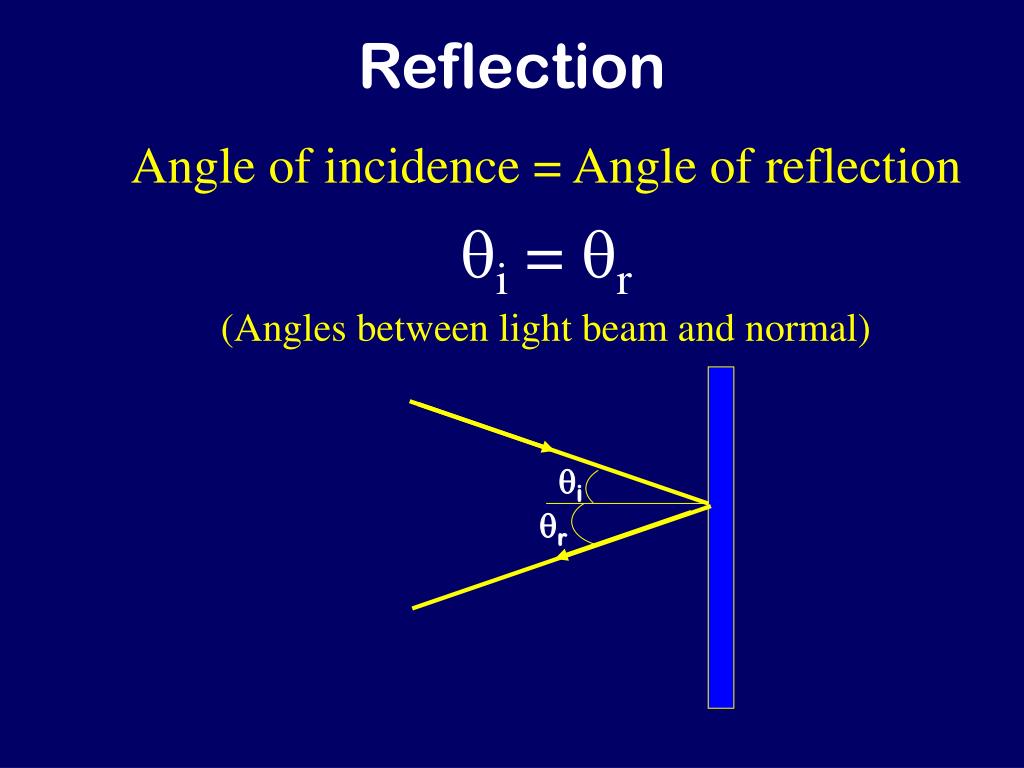

The largest the angle of refraction θ 2 θ 2 can be is 90 ° 90 °, as shown in part (b). ) Now imagine what happens as the incident angle increases. (Since n 1 > n 2, n 1 > n 2, the angle of refraction is greater than the angle of incidence-that is, θ 2 > θ 1. If, as shown in the figure, the index of refraction for the second medium is less than for the first, the ray bends away from the perpendicular. Part of the light crosses the boundary and is refracted the rest is reflected. Interestingly, we can produce total reflection using an aspect of refraction.Ĭonsider what happens when a ray of light strikes the surface between two materials, as shown in Figure 1.14(a).

But it would be useful to have a mirror that reflects all of the light that falls on it.
Analyze the reason for the sparkle of diamondsĪ good-quality mirror may reflect more than 90 % 90 % of the light that falls on it, absorbing the rest. Describe the workings and uses of optical fibers. Explain the phenomenon of total internal reflection. At the point of impact, all rays, including refracted and incident rays, are on the same interface as the normal.By the end of this section, you will be able to: We use the degree unit to measure both the angle of incidence and the angle of refraction.Ģ. The speed of light is slowed inside the denser medium, but there is no resistance to the speed of light from any rarer media.ġ. Denser media include glass, diamonds, and kerosene. Air or any other type of gas is an example of a rarer medium. The medium has a significant influence on the angle of incidence and refraction. When compared to the speed of light in the denser medium, the rarer medium has a faster speed. The first name refers to a more scarce medium, whereas the second refers to a denser medium. The ray of light makes contact with two different materials. The incident ray, refracted ray, normal (perpendicular to the point of incident), and point of incidence are all factors in the refraction process. The refraction of light occurs when the path of light goes through one medium and into another, according to scientists. Relation between Angle of Incidence and Angle of Refraction NCERT Exemplar Class 12 Physics Solutions Chapter 9 Ray Optics and Optical Instruments. NCERT notes Class 12 Physics Chapter 9 Ray Optics and Optical Instruments. NCERT solutions for Class 12 Physics Chapter 9 Ray Optics and Optical Instruments. What is Angle of Refraction? The angle of refraction is the angle formed by the refracted beam and the normal at the point of incident. As light enters the glass, it refracts or bends, then continues on and emerges at a different angle back into the air. The ray of light travels through the air at an angle and enters the glass. The angle of emergence refers to the angle at which light emerges from a medium (such as a glass slab with parallel sides). The angle between the approaching wave's direction of motion and a perpendicular to the reflecting surface (angle of incidence) is equal to the angle between the reflected wave's direction of motion and a perpendicular to the reflecting surface (angle of reflection). What is Angle of Reflection? Define Angle of Reflection 
Refraction and Dispersion of Light through a Prism.Normally, this line is drawn at the point of incidence. The normal is a line that intersects the mirror surface at a right angle. Now let's have a look at the normal parameter. The point of incidence will be where the beam of incidence hits the mirror. The angle of incidence and reflection are always the same, and they are both in the same plane as the normal. The angle of reflection is the angle formed by the surface normal and the reflected beam.īecause of the rule of reflection, the angle of incidence equals the reflected angle. The ray that depicts the light reflected by the surface is the reflected ray that corresponds to a specific incident ray. The point of incidence is the point at which a beam of light travels.Ī perpendicular line drawn from the same point is known as a normal.Ī light ray that strikes a surface is called an incident ray. The reflected ray is one that travels away from the incident ray's point of origin. The incident ray is the ray that strikes the mirror's smooth surface initially. Here are some crucial aspects to remember when it comes to incidence angle: This article will provide you with detailed information on the angle of incidence as well as several key concepts linked to the subject. To comprehend the angle of incidence, we must first explore the notion of light reflection in depth. Angle of Incidence Meaning: The angle of incidence is defined in physics as the angle created by a ray propagating on a surface and the line normal to the point of occurrence on the same surface.







 0 kommentar(er)
0 kommentar(er)
